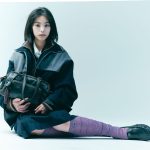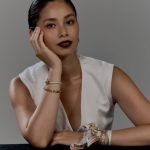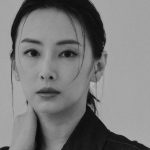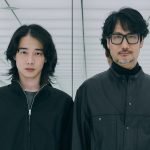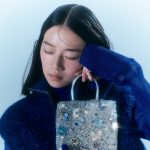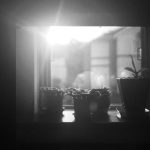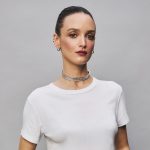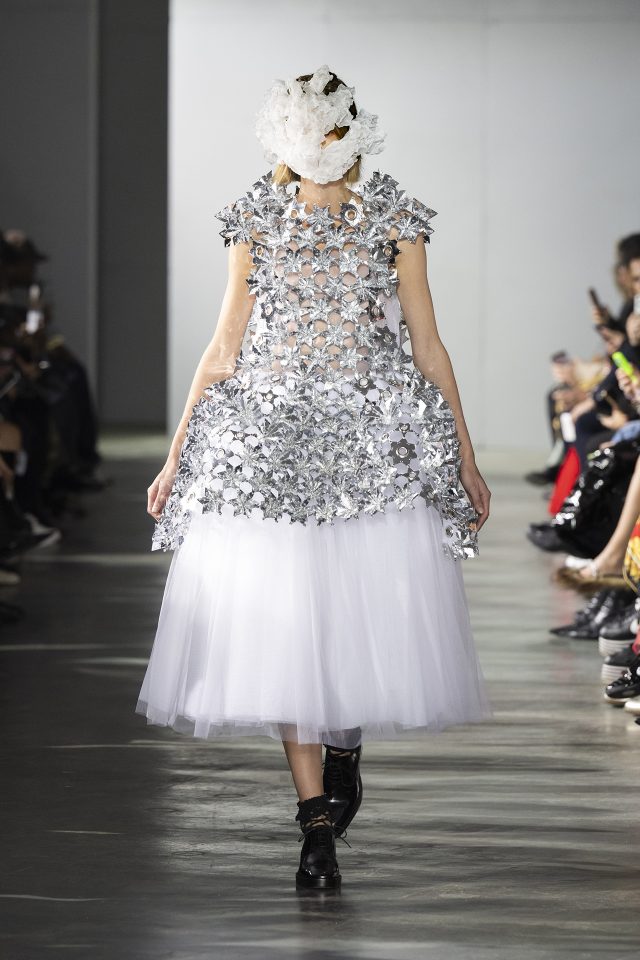写真家・鈴木親インタビュー
Chikashi Suzuki
interview & text: miwa goroku
edit: daisuke yokota
90年代半ばから、フランスの雑誌『Purple (パープル)』を拠点に、インターナショナルな活動を続けている写真家・鈴木親 (すずきちかし)。ファッションとアートとストリートの境目を縦横無尽に行き来しながら独自の作風を確立させ、作家としての高い評価を勝ち得てきた。鈴木氏は写真を撮るのみならず、ファッションブランドにコラボレーションワークを仕掛けるなど、クリエイションの現場そのものから作り上げていくパワーとネットワークを持つことでも一目置かれる存在だ。伝説の編集者として語り継がれる故・林文浩=『DUNE (デューン)』編集長には、「日本で唯一のファッション・フォトグラファー」といわしめたこともある彼に、ここではそのファッション写真のロジックについて話を聞く。
写真家・鈴木親インタビュー
Photography
*You’ll find the English text after the Japanese.

Courtesy of Chikashi Suzuki
90年代半ばから、フランスの雑誌『Purple (パープル)』を拠点に、インターナショナルな活動を続けている写真家・鈴木親 (すずきちかし)。ファッションとアートとストリートの境目を縦横無尽に行き来しながら独自の作風を確立させ、作家としての高い評価を勝ち得てきた。鈴木氏は写真を撮るのみならず、ファッションブランドにコラボレーションワークを仕掛けるなど、クリエイションの現場そのものから作り上げていくパワーとネットワークを持つことでも一目置かれる存在だ。伝説の編集者として語り継がれる故・林文浩=『DUNE (デューン)』編集長には、「日本で唯一のファッション・フォトグラファー」といわしめたこともある彼に、そのファッション写真のロジックについて話を聞く。
—ずばり本題から入りますが、今のファッション写真を取り巻くシーンを、親さんはどう捉えていますか?
基本、海外の話になります。海外ではファッションとアートと映画、それぞれのシーンにいる人たちが、みんなフラットにつながっています。ファッションのパーティに行けば、そこにはアートの人も映画の人も来ているのが普通の風景です。最近だと Harris Savides (ハリス・サヴィデス) がいい例だと思う。彼はもともと Gus Van Sant (ガス・ヴァン・サント) 監督のチームメンバーで、最近では Sofia Coppola (ソフィア・コッポラ) 監督の『SOMEWHERE (サムウェア)』や、最新作『The Bling Ring (ブリング・リング)』なども手掛けている撮影監督ですが、彼が撮る映像ってちょっとだけファッショナブルに見えたりするんです。本人はいたって普通のおじさんだしファッションの人では全然ないけど、Gucci (グッチ) のコマーシャルを撮った経験もあるから、ファッションのツボを知っています。
—日本ではどうでしょうか?
日本では、ファッションとアートと映画の人が、残念ながら全部離れています。さらに写真に絞っていうと、フォトグラファーのトップといえば、広告カメラマンということになっていますよね。つまりファッション誌は多くのフォトグラファーにとって、トップに至るまでの登竜門でしかない。ファッションでいい写真を撮ることが目標ではないから、簡単にそれっぽい写真を撮ってしまっていることが多いし、そこでオリジナリティを追求するプライドだったりモチベーションがあまりないわけです。

Courtesy of Chikashi Suzuki
—写真の方法論はすべてやり尽されたともいわれる今、オリジナリティはどのようにして生まれ、評価されるのでしょうか?
今トップフォトグラファーといわれる人たちは、模写のようなことを必ずやっています。たとえば Inez van Lamsweerde & Vinoodh Matadin (イネス・ ヴァン・ラムスウィールド&ヴィノード・ マタディン) は Irving Penn (アーヴィング・ペン) を、Guy Bourdin (ギイ・ブルダン) や Terry Richardson (テリー・リチャードソン) は Helmut Newton (ヘルムート・ニュートン) を模写しています。Juergen Teller (ユルゲン・テラー) もそうで、Newton が油絵みたいにべったりと色味の強いカラーポジでやっていたものを、Juergen は CONTAX G2 などのコンパクトカメラで撮ることで水彩画のように浅い写真にしている。そうやってクラシックを理解した上で、彼らはそれぞれ自分のテイストを1ヵ所だけ入れて、独自の方法論を表現しているんです。そうするとアプローチが同じでも、違う表現になりますよね。写真におけるオマージュの入れ方は、映画とも近いです。Spike Jonze (スパイク・ジョーンズ) や Harmony Korine (ハーモニー・コリン) の映画を見ると、その構造がよくわかります。
—確かに海外のトップフォトグラファーは、写真のテイストがそれぞれはっきりしていますね。
若い時にある程度認められたら、その芸風で一生やっていくというのが海外。それらの芸風をコピーしてそのまま雑誌に出すのが日本。
—最近は Ryan McGinley っぽい写真、さらにいうなら鈴木親さんっぽい写真も、ファッションヴィジュアルのトレンドになっている気がします。

Courtesy of Chikashi Suzuki
誰かが Ryan McGinley をコピーしたとします。海外なら、そもそも掲載前に編集者がはじきますが、仮に掲載に漕ぎ着けたところでそっちのほうが大変です。その人は一生かけて、Ryan のコピーと言われ続けてしまう。Terry Richardson 風の写真というのも最近よく見かけますよね。○○っぽいというのはもちろん海外でもあることですが、Terry っぽいというところでいうなら、似たようなテイストを持つ Kenneth Cappello (ケネス・カッペロ) というフォトグラファーは、きちんと住み分けをしています。Terry は第一線で活躍し、Kenneth はもう少しファッション寄りで Terry ほどはエグくないところがキレイに撮れる。Terry がいるという大前提があった上で、Kenneth がいるだけです。日本の場合はその境界線がすごく曖昧で、同じフォトグラファーが急に芸風の違う写真を撮ったりしています。今店頭に並んでいる雑誌でも、Juergen Teller が手掛けた Marc Jacobs (マーク ジェイコブス) の 2013 S/S キャンペーンを、そっくりそのままのコンセプトで他のハイブランドにコピーしている写真が平気で出ていたりするからびっくりしますよ。海外だと100%あり得ない。作品に模写するのだったらいいけど、お金をもらって自分のクレジットを出すというのは、悪くいうと泥棒と同じです。アジア圏の中で優秀なフォトグラファーになれたとしても、ヨーロッパでは絶対対等に扱われない。外国からファッションチームがシューティングに来る時、声が掛かるのはまず荒木経惟さんか森山大道さんであることを考えれば、わかりますよね。彼らは決してファッションの人ではない。でも、絶対的なオリジナリティを持っているから認められる。
—コンセプトありきの写真はどうでしょう?
畠山直哉さんなど一部の写真家を除いて、なかなか難しいですよね。もともとあるものを撮るという制限がある以上、表現としてはどうしても弱くなります。コンセプトありきでいきたいなら、写真よりも絵のほうが強い表現になると思います。写真の場合は、ちょっとハプニングが入ったほうが面白くなる時があるし、その曖昧さが写真の良さでもあるから。ひとつのコンセプトを成立させた上でファッションを撮っていくという、Richard Avedon (リチャード・アヴェドン) のような例もあります。なぜ Avedon がすごいのかというと、彼はハリウッド俳優からホームレスまで、全員を白バックの同じフォーマットで撮った。それが1冊の本になった時、人としてみんな同じに見えるというコンセプトがあったんです。この一連のポートレート写真があった上に、Versace (ヴェルサーチ) のキャンペーンヴィジュアルが生まれたのだという Avedon のルーツを、彼の写真を真似したい人は必ず知っておくべきです。

Courtesy of Chikashi Suzuki
—親さんの写真は、日本よりも海外の雑誌で多く見かけますが、意識的に仕事をする場所を選んでいるのでしょうか?
日本では僕、しばらく業界から干されていましたからね。いろいろありましたが、未だに忘れられないのが、某ファッション誌の巻頭ストーリーで僕の作品が丸ごとコピーされたこと。本当に信じられなくて、そのフォトグラファーには直接抗議の電話を入れました。そりゃ僕、嫌われますよね (苦笑)。でもそのくらい僕は真剣だったし、お金がない中必死で撮っていた。海外ではいろんな写真を見たし、現場も見てきました。だから誰が何をどう置き換えて表現しているのか、そのロジックや構造がわかる。だから僕は意識的にコピーしないということができる。ある意味、すごく不器用です。
—親さんは自分のオリジナリティを、どのように追求していったのですか?
まず20代のうちは、コマーシャル仕事は絶対に受けないと決めていました。昔、何度かイタリアの大きいブランドのキャンペーンを結構な額でオファーいただいたことがあったんですけど、すべて断っていました。なぜならコマーシャルを最初にやってしまうと、コマーシャルの写真家としてしか見られないようになってしまうから。海外での僕の周りの先輩のフォトグラファー達は、いまいち作家として扱われず、ファッションの人として見られがちなのは、コマーシャルを先にやっているからです。だから僕はひたすら我慢しました。
—作家として認められたかったから?
そうです。そのぶん海外の雑誌ではたくさん撮影をしましたが、基本的にあっちは経費しか出ないので、生活は相変わらず苦しかった。そのうち日本で『Brutus (ブルータス)』から声を掛けてもらえるようになり、その後3年間 (1999〜2002年) はやっと普通の会社員くらいのギャラで、生活がしのげるようになりました。当時のファッション撮影で望遠レンズを使うフォトグラファーって少なかったと思うんですけど、僕は『Brutus』の全ての撮影を望遠レンズで撮りました。けっこう面白いページでしたよ。ワンテーマでちょっとギャグっぽさがある感じ、今の『Brutus』にもテイストとして残っていると思います。
—親さんの写真といえば、よく日付が入っていますがその意図は?

Courtesy of Chikashi Suzuki
デジタル写真が普通になった頃から写真に日付を入れるようになりました。そうすることで、仕事の写真でもドキュメンタリーっぽく自分の作品として見せることができるから。僕はシューティングする時、キャスティングも含めてだいたい自分で組んでしまうので、自分の作品にもなる。しかも数字は、世界共通の言語でもある。僕が数字を入れるのには、そういう理由があります。ファッション写真の場合は、ちょっと気を遣って日にちと時間だけにしたりすることもありますが。(笑) そもそも少し前までは、ファッション写真に日付を入れるのはタブーでしたからね。Ari Marcopoulos (アリ・マルコポロス) もやっていますね。
—ハーフカメラも親さんの芸風ですよね。
ハーフカメラはみんなが使わないという理由で、1000円くらいで叩き売りされているやつを適当に買って、ちょっとだけ使えるように改造したんです。あんな精度の悪いカメラ、それまでは誰もファッションでは使わなかったですよ。雑誌はぜんぶタテだから、ハーフカメラで撮ると1ページで3コマいけたりしますよね。裁ち落としなら、自分でデザインもできちゃうメリットもある。連動でとっているから、もし上の写真が気に入らなくても、見る人によっては上のほうがよかったりする可能性もある。意図してないところが狙えるのが面白いです。
—一時期ハーフカメラが流行ったのは、やはり親さんの影響なんですね。
忘れられたものって、案外強い。あるいは最先端。力があるのはそのどちらかです。ハーフカメラは、フィルムしかない時代は仕事で使用するには NG だった。でもデジタルが出てくると、その弱点が逆に強みになると思った。デジタルではいくらでもシャープにできるから、だったらシャープじゃないもののほうが面白いだろうと思ってやってみたのがハーフカメラです。
—タブーを犯す時は、必ずロジックも立つわけですね。
タブーの意味を理解した上で、さらにタブー以外の部分を完全にきっちりやってからじゃないと、それこそ本当にタブーです。タブーを犯すことが最先端とかカッコいいとか、そういう捉え方をするのは良くないことです。Ryan McGinley の写真は、ちゃんと写っていないことが魅力に見えているかもしれないけど、彼は他の要素を綺麗にしているように思えます。あるいは僕が、あえてモデルを豆粒みたいに引き気味で撮るのは、その人物を風景の中で孤立した状態もしくは風景の中に入れ込んで、スタイリングを引き立たせるという意図があるからです。たまに、ちゃんとスタイリングしたものをただ引きで小さく撮っているだけの写真を見かけますが、残念に思います。他にもよく用いるタブーがあります。女優さんに服を着せる時って、サンプルサイズだと合わない時があるじゃないですか。洋服を表現する上で、サイズが合っていないというのは良くないです。じゃあどうしよう?となって初めて、寝かして撮ってみようというアイデアが出てきます。ただこれってやっぱり基本的には NG なんです。ワンピースはシルエットが命でしょう? 身長178㎝位のパーフェクト体型のモデルに無地のワンピースを着せて、わざわざ白ホリで寝かせて撮ったような写真が最近の雑誌に載っていますが、意味がないと思います。
—日本だからこそ撮れるものもありますか?

Courtesy of Chikashi Suzuki
海外とは逆に、無茶な撮り方ができます。ただ、それだとファッション産業の活性にはつながらないし、継続性もない。カルチャーにするためには、ひとつ筋がないとダメだと思う。面白い話があるんですけど、『Purple (パープル)』の AD が日本に来た時、チェックするのはどんなところだと思います?彼らが買って帰るのはコンビニで売っている下着の通販カタログや成人向けの本だったりするんです。そういうのって表紙が変わった装丁だったり、エンボス加工になっていたりするじゃないですか。ヨーロッパの本や印刷物って、もともとは聖書の延長だったりするから、それが彼らの目にはすごく面白く映るんですよね。最近、ヨーロッパの雑誌がエンボス加工になっていたりするのは、そんなのを見たからかと思います。(笑) Terry Richardson や Harmony Korine もそうでした。彼らが今みたいに有名になる前は日本で林さんが彼らとよくつるんでいたので、それを近くで目撃できたんですけど、林さんが彼らにプレゼントしてお土産にしていたのは、成人雑誌でした。(笑) それも素人の投稿写真系。自分の彼女を歩道橋や駅のホームで脱がせて野外撮影したりとか、海外だと考えられない写真が載っている。Terry の写真って、野外で脱いでいることが多いじゃないですか。このスタイルはニュートンの影響からだけでなく日本のアマチュア写真も影響しているかもしれませんね。ただ全てが Terry の作品になっているので、それが彼のスゴいところですが。僕が言いたいのは、一流のクリエーターのアイデアのソースが日本の成人雑誌だとわかっていたら、じゃあ俺はこういう方法で撮ってみようかなとか、別のロジックが思いつけるかもしれないということ。ファッションやアートの写真からだけではない。
—フィルムとデジタルをどう使い分けていますか?
フィルムの特性と限界をわかった上で、フィルムにできないことをデジタルでやっています。僕は運良くフィルムもデジタルも両方できる世代。フィルムを長年やった後、まだ現役のうちにデジタルがきたのはラッキーだったと思います。今の若い子にとっては、デジタルがマイナスになっているかもしれないですね。リスクも少なく、修正も可能な分、個性を出しづらくなってしまっているのかもと思います。Canon (キヤノン) の 5D で撮って MAC で編集したら、普通に雑誌で使えるようなクオリティーにはなりますから。
—親さん流の現場の作り方は?
たとえば僕が正面でキメを撮る時、アシスタントに望遠レンズを渡して、違う角度で離れたところから狙って撮ってもらう時があります。モデルの意識は僕のほうに向いているから、僕が予想していなかったハプニングが入ってくることがある。アシスタントのカットには、以前『Youtube』で見たんですけど、Inez van Lamsweerde & Vinoodh Matadin の撮影法が面白かったんです。Inez の旦那さんやアシスタントが、彼女のすぐ脇で撮っているんですよ。Inez はストロボとリンクさせたカメラで、旦那さんはストロボとリンクしないカメラで。そうするとストロボがリンクしていないアンダーやオーバーが同時に撮れて、それが案外予想できないカッコいいものになっているのかなと思いました。

Courtesy of Chikashi Suzuki
—フィルムとデジタルの使い方以外で、ファッション写真の転機を感じたことは?
9.11以降、海外のファッションキャンペーンのすべてが激変しました。9.11以前は、『purple』で撮影していたような作家系のフォトグラファーもキャンペーンの仕事をいっぱいやっていたし、僕もオファーを受けることがあった。でも9.11を境目に、大御所カメラマンたちがギャラをかなり下げたと聞きます。先行きの不安定さで保守的にもなり、以後、現在に至るまでキャンペーン仕事のほとんどは一部のトップフォトグラファーに集中しています。モデルも競合がなくなったことで、何人かに集中してしまい、新しい人が出る機会が以前より減ってしまっているように見えます。もし9.11がなかったら、僕も含めてもっと多くの作家系のフォトグラファーがキャンペーンを手掛けていたかもしれないし、モデルもより多くの若手が活躍する場が広がって多様性が出ていたとかなとも思います。

Courtesy of Chikashi Suzuki
—雑誌も変わりましたよね。親さんが携わっていた『Purple』がふたつに分かれたり。
『Purple』はフォーマットを変えながらがんばっていましたけど、結局わかれました。Elein Fleiss (エレン・フライス) と Olivier Zahm (オリヴィエ・ザーム) の2人の編集者は、もともとアートの人です。Elein は、Man Ray (マン・レイ) などを扱っているギャラリーオーナーの娘さんで、写真の好き嫌いが昔からすごくはっきりしていました。ブランドから広告費をもらって撮影しても、その写真が良くなかったら使わないという気質の人です。それでも9.11以前なら、雑誌が面白かったらいいという風潮がなんとなくありました。9.11後はそうもいっていられなくなった。服が写真にちゃんと写っていて、それがちゃんと掲載されていないと広告が入らなくなったと思います。当たり前のことなんですが。(笑)
—親さんの写真は今、エレンが手掛ける『Purple Journal』のほうでよく見かける印象です。
Olivier は『Purple』のテイストをちゃんと残しつつ、『Purple Fashion』という強い印象の本に変えました。今は作家系のフォトグラファーにはファッションの撮影をあまり頼まなくなっていますね。Elein はそういうのに興味がないからと、独自に『Purple Journal』を立ち上げました。『Purple Journal』ができた当時は、作品をつくることに興味があったので、Eleinの方でそれを発表していました。最近は、ファッションシュートでも自分の作品にできるようになったので、『Purple Fashion』で撮影しています。どっちも僕のルーツなんで外せないですね。

Courtesy of Chikashi Suzuki
—9.11後、親さんの中での変化は?
芸能の方、役者さんを撮るようになったこと。それまでずっと、芸能人と白人モデルはなんとなく断っていたんです。転機となったのは、菊池凛子さんの撮影です。Chanel (シャネル) を乗馬で撮りたいと思って乗馬ができるモデルを捜した時、やってきたのが彼女だった。まだ菊池凛子と名乗り始める前で知名度もなかった頃。芸能人だけどまぁいっかと思って撮影してみたら、意外とサラりと撮れた。自分が年をとったのもあるかもしれないけど、芸能を撮ることにコントロールされなくなっていた。この撮影をきっかけに、役者さんをモデルにするようになりました。そうしたら、すごく仕事が広がっていきました。凛子さんに感謝です。
—白人モデルは?

Courtesy of Chikashi Suzuki
僕が日本に戻って来た頃は、雑誌に出ているすべてのモデルが白人だった。英会話の先生じゃないの?って思うようなレベルの子もいたし、だったら日本のモデルを自分で探したほうが全然いいと思っていました。当時、よく一緒に仕事をしたのは Sachi や福島リラです。人気のショーや雑誌に出ていないようなモデルさんばかり探していました。(笑) でもいい写真を撮ると、人気もガラッと変わるんですよね。そういうのが面白いと思って、新人ばかり撮影していました。最近はけっこういいモデルさんも来日しているので、外国人モデルも撮影するようになりました。
—親さんの撮影スタイルについて教えてください。
もともと、撮影はすごく早いです。先日やった『commons&sense (コモン&センス)』の撮影は、8ページ8体を1時間くらいで終わらせました。そのぶんロケハンは徹底的にやります。撮影するルックも事前に送ってもらってチェックする。完全にフィックスはしないけど、無駄なテイクは入れません。だいたい1体につきワンテイクかツーテイク。ツーテイク目は、ハプニングを入れたいと思った時に撮ります。
—フォトグラファーとファッションデザイナーとの関係を、どう捉えていますか?
たとえば Balenciaga (バレンシアガ) の場合、アートディレクターの Fabien Baron (ファビアン・バロン) は、メインとなるシーズンヴィジュアルを David Sims (デヴィッド・シムズ) で撮影していました。Sims は素晴らしいくらいに綺麗なファッション写真ですから。Sims でレディースキャンペーンをしっかりさせておいて、Ryan McGinley にメンズのヴィジュアルを撮影させました (2009 S/S)。その時 Balenciaga は、そのヴィジュアルを Ryan の写真集として限定のハードカバーで作ったんです。何がいいのかというと、Ryan は自分のスタイルで Balenciaga を表現することができますよね。仮に洋服がちょっと写っていないようなことがあっても OK ということです。作家性を損なわずに。Sims の強いファッションイメージがあり、Ryan のような若い作家も起用してエッジも表現できるので、そこには、ビッグメゾンとフォトグラファーの関係が Win-Win で成立していると思えます。
—親さんは最近、TOGA と have a good time のコラボレーションを仕掛けましたよね。

have a TOGA time
ストリートのコネクションを持つ have a good time に、TOGA のロゴを勝手に入れた T シャツなどを作ってもらいました。僕はムービーと写真を撮って、『Purple DIARY』に UP してもらって。そうしたらモード界隈の人の目にもつくし、ファッション表現になりますよね。並行して開催した THE LAST SHOW のグループ展には Jason Dill (ジェイソン・ディル) が参加していましたから、Supreme (シュプリーム) 系のお客さんもチェックしに来る。小さい規模でしたが、海外にも発信できて、ストリート、アート、ファッションを上手く繋げられたかなと思ってます。
—ムービーが手ブレだらけだったのはどんな意図から?
性能の悪い、家庭用カメラを使って手ぶれさせました。今のものなら逆に手ぶれしないですから。(笑) そのグチャグチャ感が、グラフィティで落書きしているようなアブストラクトなイメージとマッチンングすると思いました。これが1時間続くと酔っちゃいますが、5分程度のショートムービーだったら見てもらえる。ディスアドバンテージをアドバンテージにすること。人がいいと思うポイントはそこにあります。使ったのは、3万くらいの適当なキヤノンのカメラです。そのキヤノンのカメラは暗部が締まらない特徴があるんですけど、僕はもともとネガが好きだから、ムービーもあえて浅い感じにするのが好きです。映像のプロにいわせるとヒドイ画像らしいですけど。
—『ハニカム』でのエディトリアルで背景をアニメにしたのは?
もともと街の工事現場っぽい場所の色が好きなんですけど、最近は外国からのロケでもそういう現場が好んで使われるようになって、ちょっと面白くないなと思っていた。じゃあどこで折り合いつけようかって時に、あえてグラフィティが描かれていないようなところを探そうと思った。それが秋葉原。グラフの無いところなら、グラフが書いた服がウルサく感じないですから。
—ヴィジュアルのモデルは、ちょっと歪んでいますね?
望遠と魚眼を使いました。全部望遠だとサラッと終わっちゃうから、ハズしで魚眼を。この手法は押井守が元ネタです。彼は映画の中で、必ず何ヵ所かに魚眼の表現をワザと入れている。

Courtesy of Chikashi Suzuki
—日本のデザイナーをどう見ていますか?
若くて才能のあるデザイナーは、日本にもたくさんいます。でもそのほとんどが10年くらいで消えてしまう。何が足りないのかというと、ひとつはヴィジュアルだと思うんです。つまり、いいアートディレクター、いいフォトグラファー、いいスタイリストと一緒に仕事ができているかどうかです。ファッションなので、同時期に同じような方向性のものが出来上がることもあります。発表の早い欧米のデザイナーの方が先に露出しますし、その後に出す方はどうしても不利ですよね。ましてルックブックかショーのみなら、服だけで判断されてしまいますし。そういう場合は、ビジュアルで世界観を違った見え方にするだけでも違うと思うんです。それによって、海外の一線でも活躍できる可能性は上がると思います。
—もっと多くのフォトグラファーがインターナショナルな視点を持てるといいですね。
僕も40歳になったから言えるけど、何かを成し遂げようとするなら、表層だけをなぞるのは絶対によくない。写真は撮れちゃうし、ちょっとしたお金儲けはできるかもしれないけど、世界には出ていけないし、続かない。その構造やオリジナルのルーツを探った上で模写して、自分のオリジナリティーのあるものを作るべきです。東京はアジアの中でもスペシャルな場所だから、まだネームバリューがあるうちに修正しないと。
—親さんの失敗談を聞きたいです。
パリに行って間もない頃、『Purple』で Maison Martin Margiela (メゾン マルタン マルジェラ) の撮影をすることになった時。最初はブランドのこともよくわかっていなくて、でもなんとなくシュールっぽいのがいいのかなと思い、適当に公園で撮ろうと言ったら、質問攻めにされました。(笑) 服のコンセプトがあって、それを理解した上でハズすならいいけど、何もわからないうちに公園で撮るというのはあり得ないって。それで軌道修正したら、結果的にその写真は巻頭で使ってもらえました。パリには当時、Anders Edström (アンダース・エドストローム) や Mark Borthwick (マーク・ボスウィック) がいました。僕が一番年下で、フランス語はおろか英語もちゃんと話せなかったのに、ご飯によく呼んでもらったりと、なんとなく現場に居させてもらえたのは、すごくラッキーだったと思う。何かひとつのことをコンシャスにやるというのがいかに大切かを学びました。
—そこに居合わせることができたのも親さんのひとつの才能ですよね。パリを目指した最初の理由は何だったのでしょうか?
偶然です。最初のキッカケは、学生の時にたまたまもらった『L’HIVER DE L’AMOUR BIS』 (英語で winter of love) という展覧会のカタログ。Wolfgang Tillmans (ウォルフガング・ティルマンス) をはじめ現代美術の作家たちの作品が収録されているんですけど、その中にひとつ、Maison Martin Margiela (メゾン マルタン マルジェラ) のショーのドキュメンタリーが入っていたんです。ファッションなのにレポルタージュ的な側面があったりして、とにかくカッコいいと思った。クレジットを見たら Anders Edström の名前があって、lives in Paris と書いてあった。これはもうパリに行くしかないと単純に思いました。とりあえず今できることからと思って、日仏学院に通い始めました。そこでたまたま知り合った人の奥さんが、Anders の知り合いだったんです。その人には住所だけ教えてもらい、その後1年くらいかけて渡仏のためのお金を貯めて、Anders に直接会いに行きました。
—運命に導かれている感じがしますね。
Anders のところにブックを持って訪ねて行ったら、「君は自分がいいと思う写真を撮っているから、このまま撮ったほうがいい。僕がいいと思っているところを全部紹介してあげる」って言ってくれて、その後すぐに出会ったのが『Purple』です。彼らは僕の経歴も年齢も聞かないまま、シューティングやってみる?と聞いてきた。やります!ってもちろんなるじゃないですか。そのままキャリアがスタートしました。後でわかったんですけど、僕が最初に影響を受けた『L’HIVER DE L’AMOUR BIS』は、『Purple』が作っていたものだったんです。『アルケミスト』じゃないですが意味もなく、急にこうなりたい、こうしたいって思うことありますよね。それは心の声だから、従う。そうすると自分のやるべきことが見えてくる。直感に従って、それを実行するために、何をすべきかを考え、やってみる。たとえ目指すゴールがすごく遠いところにあったとしても、できることから始めれば案外近づくし、その人がそのまま進んだ方がいい場合は、偶然がうまく重なっていくことがある。若い人たちに参考にしてもらえればと思って、時々話していることです。

Courtesy of Chikashi Suzuki
—若手フォトグラファーに向けて、メッセージをください。
自分が何ができないかを分かっている人は、何ができるかが分かるから、そこを伸ばしたりすれば、いい。専門職なので。何となく、なんでもできてしまう方が良くないと思います。実際、日本の現場はそれを求められますが。せっかくいいセンスがあるのに間違ったほうに行こうとしている若いフォトグラファーの写真を見ると、本当に心配になります。教える必要はないっていう人もいるけど、本来は教えるべきだと思う。ちょっとだけ方向を修正してあげることができたら、日本の写真はもっと良くなるし、それによって、民度も上がって、他の分野も良くなると思う。
今は大きく稼げる時代じゃないし、若い子は最初からしんどいと思うけど、最初から何でもやろうとせずに、もうちょっと自分の写真について考えた方がいい。特に作家としてやっていきたい人なら尚更です。100%のものを出さない限りは次がない。人の作品をコピーしたり、満足のいかないダメな写真を出したら次がない。そう思って僕は一生懸命やってきました。
<プロフィール>
鈴木親 (すずき・ちかし) 1972年生まれ。96年渡仏し、雑誌『Purple』で写真家としてのキャリアをスタート。『Purple』(仏)、『i-D』(英)、『Dazed & Confused』(英)、『CODE』(オランダ)、『Hobo』(カナダ)、『IANN』(韓)、『honeyee.com』(日)、『GQ』(日)、『commons&sense』(日)、『Libertine / DUNE』など国内外の雑誌で活動。Issey Miyake、United Bamboo、Toga などのワールドキャンペーンを手掛ける。主な作品集に『shapes of blooming』(treesaresospecial刊/2005年)、『Driving with Rinko Kikuchi』(THE international刊/08年)、『CITE』(G/P gallery刊、09年)など。

Chikashi Suzuki
Chikashi Suzuki is an internationally active photographer, who has worked for the French magazine “Purple” since the mid 90s. Chikashi established his own distinctive style by moving freely across the realms of fashion, art, and the street, earning a high reputation as an artist. In addition to his abilities as a photographer, Chikashi is also recognized for his strong potential and network that enable him to establish entire projects from their foundations, which can be observed through his collaborations with fashion brands. The late legendary editor and Chief Editor of “DUNE”, Fumihiro Hayashi, referred to Chikashi as the “only fashion photographer in Japan.” Today, we would like to ask Chikashi Suzuki himself about what happens behind the scenes of fashion photography.
—I would like to cut to the chase and start by asking you about your views on the current fashion photography scene.
This is basically what happens abroad, but those working in the fields of fashion, art, and movies are all connected. If you go to a fashion party, you will almost always meet people working in the art or movie business. A recent example would be Harris Savides. He was originally a member of movie director Gus Van Sant’s team, and is currently a cinematographer, who recently worked for Sofia Coppola’s “SOMEWHERE” and her latest movie “The Bling Ring”. Although Harris himself is an ordinary old man unrelated to the field of fashion, the images he takes look somewhat fashionable. His knowledge regarding fashion comes from his experience shooting Gucci’s commercial.
—How about in Japan?
Regrettably, in Japan, people working in fashion, art, and movies are all separated. In the case of photography, the top profession is considered to be an advertising photographer. In other words, most photographers regard fashion magazines as a mere step on their ladder to success. Since taking good fashion photographs isn’t their goal, many simply settle with taking fashionable-ish photographs and they don’t have much pride in pursuing originality nor have the motivation.
—In an age where all methodology of photography is said to be done, how will originality develop and how will it be evaluated?
Those currently referred to as top photographers, have all imitated the works of others. For example, Inez van Lamsweerde & Vinoodh Matadin have copied Irving Penn’s work, and Guy Bourdin and Terry Richardson, Helmut Newton’s work. The same can be said for Juergen Teller. Where Newton applied a thick coat of strong colored positives to form an oil painting-like image, Juergen used compact cameras such as the CONTAX G2 to create a lighter water-color painting-like image. Having understood the classics, they apply a taste of their own style to express their own distinct methodology. Although the approach is the same, it creates contrasting expressions. Playing homage in the field of photography is very similar to that of movies. You can grasp a good understanding of its structure by watching Spike Jonze and Harmony Korine movies.
—The works of top photographers abroad do certainly have distinct tastes.
Abroad, if you receive a certain amount of recognition in the early days of your career, you stick to that style for life. In Japan, such styles are copied and printed on magazines as they are.
—Recently, it seems styles similar to the works of Ryan McGinley and yourself, Chikashi Suzuki, are the current trends for fashion visuals.
Let’s say someone copies Ryan McGinley’s work. Abroad, the editors would never print it in the first place. If by chance, it gets printed, it will cause an even bigger problem. That photographer would be called Ryan’s copycat for the rest of his life. Recently, Terry Richardson-ish photographs are also popular. Somebody-ish photographs also do exist overseas. In the case of Richardson-ish, Kenneth Cappello’s work has a similar taste. However, Kenneth makes sure both styles can co-exist. Terry is a photographer in the front line while Kenneth leans more towards the field of fashion and the beauty of his work is that it’s not as harsh as Terry’s. Terry exists and Kenneth exists – that’s all there is to it. In Japan, that border is extremely ambiguous, and photographers tend to change their styles. I was very surprised to see a magazine currently in stores now with photographs for some high brand that are complete copies of Juergen Teller’s Marc Jacobs 13S/S concept. This is 100% unthinkable abroad. Simply imitating someone’s work is not the problem. Gaining money and credit for it is, in a way, the same as robbery. Even if that photographer becomes famous within Asia, he would never be treated as an equal abroad. This is why fashion teams from abroad always call upon Nobuyoshi Araki or Daido Moriyama when they shoot in Japan. Although they aren’t fashion photographers, they are valued because of their unparalleled originality.
—What are your ideas on conceptual photographs?
With the exception of a hand full of photographers such as Naoya Hatakeyama, I think it is a difficult genre for most. Since photography is restricted, in that the photographer has to take a picture of some existing motif, I think they lack in expression. If you want to apply a concept, I think painting would convey a stronger expression rather than photography. In the case of photography, an unexpected incident could make the image much more fun. I feel that ambiguity is one of the interesting aspects of photography. However, there is Richard Avedon who took fashion photographs based on a certain concept. What is amazing about Avedon is that he photographed everybody from Hollywood stars to homeless people under the same format, making them pose in front of a white background. When all the photographs were bound into a book, the concept was that everyone, as people, looked the same. It was such string of portraits that formed the roots of Versace’s campaign visual. Anyone wishing to imitate Avedon’s photographs should know of this fact.
—I see more of your work on foreign magazines rather than Japanese magazines. Is such choice of work intentional?
That’s because I was banned from the Japanese industry for some time. A lot went down, but one incident I can’t forget is my work being entirely copied for the cover story of a certain magazine. I couldn’t believe my eyes and phoned the photographer directly. No wonder people dislike me. But that’s how serious I was about my work, and at the time, I was shooting desperately with no money. I’ve seen a variety of photographs and many photographers in action. That’s why I understand the logic and structure of what I am altering and replacing to express my work. Hence, I can intentionally not copy anybody else’s work. In a way, I’m very straight forward.
—Chikashi-san, how did you pursue your originality?
The first thing I did was force myself to refuse any commercial work during my 20s. In the past, I’ve been offered to campaign large Italian brands on a number of occasions for significant sums of money, but I refused them all. If photographers do commercial work early in their careers, they will only be regarded as commercial photographers. I know a number of photographers abroad who are considered fashion photographers rather than artists because they began their careers with commercial work. That’s why I forced myself to withstand any temptations.
—Because you wanted to be considered an artist?
That’s right. Since I refused commercial work, I was able to spend more time photographing for foreign magazines, but since most of them only pay for expenses, it wasn’t easy to make a living. I was eventually offered a job from the Japanese magazine “Brutus” and for the following 3 years (from 1999 to 2002), I finally managed to earn just as much as a regular businessman. I think it was rare at the time for photographers to use telephoto lenses for fashion shoots, but I took all my photographs for “Brutus” with telephoto lenses. I must say the pages were rather impressive, dabbed with humor under one big theme. I think that certain taste is still remnant in the present “Brutus”.
—Your photographs are characteristic of having dates printed on them. What are their purposes?
I started including dates ever since digital photographs became mainstream. By doing so, I can add a documentary touch to photographs I’m hired to take and make them look like my original work. On most occasions, I cast and organize shoots myself so my hired work can also be considered my originals. In addition to this, I include numbers as they are a globally shared language. There are times when I reserve myself to just including the dates and times for fashion photographs though. Not so long ago, it was considered a taboo to include dates in fashion photographs in the first place. Marcopoulos does it too.
—Using half-frame cameras is also one of your styles.
At a discount price of 1,000 yen, I bought a random half-frame camera, simply because no one else used them, and modified it to a usable degree. No one ever used such imprecise cameras for fashion shoots until then.Magazines are all printed vertically so you can fit up to 3 images taken by the half-frame camera on one page. You also have the advantage of being able to design the page by trimming the edges of the photographs. Since I display consecutive images, even if I’m not too keen on the top image, there’s a possibility it may appeal to someone else. The fun of these cameras is that you can succeed in creating effects unintentionally.
—It was your influence that triggered the comeback of half-framed cameras.
Things that have been forgotten can be surprisingly powerful, in the same way that anything cutting edge can be. Either one of these extremes are powerful at one time. Back in the days when cameras used films, half-frame cameras were banned from being used for work. However, once digital cameras came into the market, I felt the flaws of half-frame cameras could become advantages. I initially started using half-frame cameras based on the idea that it would be fun to take unfocused images in an age of digital cameras, where images could be made as sharp as you like.
—You always have a logic behind breaking a taboo.
Unless you fully understand the taboo and make sure you are doing everything else properly, it wouldn’t work. It’s a mistake to think breaking taboos is cool and state-of-the-art. Many think the beauty of Ryan McGinley’s work is that the models are unclear, but I think he is doing so to make all other aspects of the photograph look beautiful. I intentionally shoot models from afar to the extent that they are the size of peas in order to isolate them within the scenery, or make their styles stand out within a landscape. I sometimes see photographs of styled models plainly taken from a distance, but I find them disappointing. There’s also another taboo I often break. When working with actresses, there are times when clothes samples don’t match their sizes. Since clothes are the main subject of fashion photos, the fact that they don’t fit is a major problem. Then what do you do? Under these circumstances, I came up with the idea of making the models lie down. However, this is generally a taboo. Silhouettes are the most important aspects of dresses. In recent Japanese magazines, I’ve seen photographers who actually went through the trouble of making models with perfect styles, 178cm in height, wear solid colored dresses and lie down in front of white backgrounds, but I think they are pointless.
—Is there anything unique about Japanese photography?
Unlike abroad, Japanese photographers have the opportunity to be reckless. However, this alone won’t enliven the fashion industry nor lead to its continuity. There needs to be a backbone in order to develop a culture. This is a funny story, but what do you think assistant directors of “Purple” check out when they visit Japan? They usually buy mail-order catalogues for underwear and pornographic magazines at convenience stores as souvenirs. The covers of such magazines tend to be embossed or bound differently. Books and other printed materials in Europe basically originated from the bible, so they find such modifications interesting. Embossed covers are recently becoming popular in Europe, but it’s probably because they saw it on Japanese magazines. The same can be said for Terry Richardson and Harmony Korine. Before they became famous, they spent a lot of time with Hayashi-san, so I had the opportunity to observe them closely, but Hayashi-san gave them pornographic magazines as a gift home. Plus, the magazines were collections of amateur porn. Boyfriends had stripped their girlfriends naked and took photographs of them in public, like on a pedestrian bridge or on the platform of a station. Such photographs are unthinkable abroad. A lot of Terry’s work consists of nude photographs taken outside. This style is probably not only influenced by Newton, but also Japanese amateur porn. However, the amazing thing about Terry is that he succeeds in making all his work look original. What I want to say is, the acknowledgement that the source of a first class creator is Japanese pornography, may open doors to other alternative logics, which aren’t restricted to that of fashion or art.
—How do you switch between film and digital?
I use digital to do things that cannot be done with film, bearing in mind its characteristics and limits. Luckily, I was born in a generation familiar to both film and digital. I think myself fortunate to be able to experience digital during my professional career after all the years I spent working with film. However, digital may be considered a disadvantage to the younger generation. Since images can be modified, there is little risk, consequently making it more difficult to be unique. I mean the quality of a MAC edited image taken by a Canon 5D is suitable for printing on magazines.
—How do you construct your work environment?
For example, when I have the models posing for me, I sometimes hand a telescopic lens to my assistant and get him to shoot the models from afar at a different angle. The model’s attention is on me so there’s a chance he may capture certain unexpected happenings. I saw Inez van Lamsweerde & Vinoodh Matadin’s shooting session on “Youtube” once and found it very interesting. Inez’s husband and assistant take photographs with her right by her side. Inez’s camera is linked to a strobe light and her husband’s camera isn’t. Without the strobe light, they can take underexposed photographs simultaneously with overexposed photographs. I figured that may create unexpected cool effects.
—You don’t have many competitors now, do you?
After 9.11, fashion campaigns abroad changed drastically. Before 9.11, many artistic photographers like those shooting for “purple” were doing a lot of campaign work. I used to receive offers as well. However, after 9.11, big shot photographers reduced their fees by substantial amounts. People became more conservative due to the instability of the future and ever since then, campaign work concentrated around a handful of top photographers. I also feel the absence of competitors in the modeling industry has caused jobs to focus around particular models, depriving newcomers of opportunities. If 9.11 never happened, I think campaigns would be more diverse, with more artistic photographers, as myself, shooting younger models.
—Magazines have changed too. For instance, “Purple”, the magazine you worked for, has divided into two magazines.
“Purple” tried its best, changing formats along the way, but divided in the end. Its two editors, Elein Fleiss and Oliver Zahm were originally from the field of art. Elein is the daughter of a gallery owner, who owns galleries such as Man Ray, and she was especially picky about the photographs she liked and disliked. If she disliked a photograph, she was the sort of person to refuse printing it regardless of whether brands paid us advertising fees. Even so, before 9.11, such things tended to be overlooked as long as the magazine was interesting. Such tendency disappeared after 9.11. I think companies stopped requesting advertisements if their clothes weren’t displayed properly within the photographs and actually printed on the magazines. Of course, this is the way it should be.
—I’m under the impression that I see your work frequently on Elein’s “Purple Journal”.
Olivier’s “Purple Fashion” added a strong impression to the magazine, while leaving the original taste of “Purple”. He rarely asks artistic photographers to take fashion shoots anymore. Elein had no interest in his intentions so she established her own magazine, “Purple Journal”. At the time when “Purple Journal” was first established, I was interested in making my own art work so I displayed my work on Elein’s magazine. Recently though, I’m now capable of making fashion shoots my own work of art too, so I also shoot for “Purple Fashion”. Both are my roots so I feel neither can be discarded.
—What changed for you after 9.11?
I started shooting people in the entertainment and acting businesses. Until then, I refused to take any celebrities or Caucasian models for no particular reason. What became my turning point was my shooting session with Rinko Kikuchi. I was looking for a model who could ride a horse because I wanted to take a photograph of a model on horseback for Chanel, and she was the one who came. This was before she called herself Rinko Kikuchi and she was yet to be famous. Although she was a celebrity, I made an exception and photographed her, but to my surprise, the shoot went very smooth. It may be because I’ve aged, but I was no longer controlled by the fact that I’m taking a celebrity. Ever since this shooting, I started photographing actresses and actors as models and my work expanded substantially.
—How about Caucasian models?
Back when I came back to Japan, all the models in magazines were Caucasian. Some just looked like English teachers. If that’s the case, I thought it best to search for Japanese models myself. At the time, I worked a lot with Sachi and Rila. I was constantly searching for models who hadn’t appeared in popular shows or magazines. When I took a good photograph, their popularity took a drastic upturn. I found that interesting so I kept shooting newcomers. Recently, quite a lot of good models come to Japan too so I also shoot foreign models.
—Please tell us about your style of shooting.
I’ve always been quick with my shoots. At a shoot I did for “commons & sense” the other day, I took 8 pages worth of photographs with 8 models in about an hour. Alternatively, I’m very thorough with the location setting. I also want to check what I’ll be shooting so I get clients to send me the looks they want in advance. Although I don’t fix absolutely everything beforehand, I don’t waste any takes. I usually take one to two photographs per look. The second photograph only when I want some sort of happening to take place.
—How do you view the relationship between photographers and designers?
If you take Balenciaga for instance, its art director, Fabien Baron, appointed David Sims to be the main photographer for its season visuals. Sims takes amazingly beautiful fashion photographs. After securing ladies’ campaigns with Sims, Fabien appointed Ryan McGinley to shoot men’s visuals (2009 S/S). Balenciaga then published a limited edition of Ryan’s work as a hardback photo collection. The great thing about this is it enabled Ryan to express Balenciaga in his own style without having to suppress his artistic creativity. In other words, the clothes didn’t even have to fit fully within the framework of the visuals. Balenciaga succeeded in expressing both the strong fashion image of Sims, and the edge of young artists like Ryan. I feel the big shot fashion brand developed a win-win relationship with its photographers.
—You were recently responsible for a collaboration between “TOGA” and “have a good time”.
“have a good time” is one of my street connections and I had them print TOGA logos on their T-shirts. Then I had “Purple DIARY” upload videos and photographs I took of them on their site. That way, they would reach the far end of the mode fashion industry and also be a fashion expression in itself. Jason Dill took part in the group exhibition “THE LAST SHOW” that was organized at the same time as the project so Supreme and other skate brand fans came to check out the exhibition as well. Although the scale of the project was small, we managed to transmit abroad and I feel it was a successful collaboration of street, art, and fashion.
—What was your intention behind the camera shake throughout the movie?
I caused the shake intentionally with the use of a poor performance household camera, since recent cameras are too stable. I felt the confusion of it would create an abstract impression as if scribbling graffiti on a wall. It would make you sick if you saw it for an hour, but people can endure it in a short 5 minute movie. Changing a disadvantage to an advantage is exactly what people are attracted to.
I used a random 30,000 yen Canon camera. Dark areas weren’t very clear with the Canon but I originally prefer negatives and like to film blurry movies. According to video professionals, the visuals are awful.
—Why did you choose animation for the background of the editorial on “Honeyee.com”?
I’ve always liked the colors of construction sites in the city, but recently they have become popular shooting sites for photographers on location from abroad, and felt it lacked in originality. Having pondered on an alternative, I came up with the conclusion of shooting a location without any graffiti at all. That was Akihabara. An area without graffiti wouldn’t clash with the graffiti printed on the shirt.
—The model in the visual is slightly distorted.
I used a telescopic lens and a fish-eye lens. The telescopic lens alone would have been too simple so I used the fish-eye lens to apply a twist. This method was inspired by Manabu Oshii. He includes visuals with the use of the fish-eye-lens in several areas of all his movies.
—How do you view Japanese designers?
There are many young and talented designers in Japan. However, almost all of them will disappear within 10 years. I think one of the things they lack is visuals. In other words, their success will depend on whether they are able to work with good art directors, good photographers, and good stylists. In the world of fashion, it is not uncommon for launch periods of similar concepts to coincide. European or American designers, who are quick at presenting their work, will be the first to expose the concept, and it will come as a disadvantage to any who expose it second. Especially if they are exposed in lookbooks or shows, the clothes will be the only basis for judgment. In such cases, I feel it would make a difference to merely change how the clothes look by adjusting the visuals. Just by doing that, I think Japanese designers will have a higher chance of competing in the frontline abroad.
—It would be great if more photographers could bear a global perspective.
I can say this because I’ve reached the age of 40, but if you are aiming to accomplish something, it’s no good just scraping the surface. You can take photographs and maybe earn some money off of it, but you won’t be able to compete abroad and you wouldn’t last. In the process of imitating a photograph, it is necessary to bear a good understanding of its structure and roots before setting out to create your own original piece of work. Tokyo is a special place even within Asia so it’s best to fix this while it still has its name value.
—Please tell us about your failures.
Once when I did a shoot of Maison Martin Margiela for “Purple” soon after I arrived at Paris. At first, I didn’t know much about the brand and only had a vague idea of taking something surreal so I proposed to shoot in some random park, but I was bombarded with questions. They told me that if I had a good understanding of the clothes’ concept and chose the park intentionally to contradict it, it would be ok, but choosing to shoot in a park with no prior knowledge is unthinkable. I readjusted my proposition and the photograph I took then ended up being used for the opening image of the magazine. Photographers such as Anders Edström and Mark Borthwick were in Paris at the time. I was the youngest and could hardly speak a word of French, let alone English, and yet they invited me to dinners rather often and let me attend their shoots. I think myself very lucky. I learnt the importance of focusing your concentration on a certain goal.
—I’m sure such experience is the result of your talent as well. Why did you decide to go to Paris in the first place?
It was completely by coincidence. What initially motivated me to go was a catalogue I happened to receive in my student days for an exhibition called “L’HIVER DE L’AMOUR BIS” (Winter of Love in English). It included works of modern artists such as Wolfgang Tillmans, but amongst them was also a documentary on a show by Maison Martin Margiela. Although it was about fashion, it had a reportage aspect to it, and I found it very cool. I checked the credits and it said it was written by Anders Edström who lives in Paris. Then I simply thought I must go to Paris. I figured the sooner I prepare the better so I enrolled in the French Institute of Tokyo. And the wife of someone I met there coincidently knew Anders personally. She told me his address and after spending a year to save up the money to go to France, I paid Anders a visit in person.
—It’s as if it was fate.
I visited Anders with my book and he said “you shoot what you think is good. You should continue to do so. Everything I think is good, I will introduce to you.” Straight after that, I encountered “Purple”. They asked me if I wanted to shoot before even questioning my history or age. I of course said Yes Please! And that is how my career started. What I found out later, is that “Purple” was actually the creator of “L’HIVER DE L’AMOUR BIS”, the catalogue that inspired me in the first place. It’s not that I’m an “alchemist”, but you know how you get these sudden urges to be somebody or do something. Those urges are what my heart wants, so I listen to them. By doing so, I know exactly what I need to do. Obey your instincts, gather your thoughts on what is necessary to achieve it, and act on it. Even though the goal seems very distant, by acting on it, you may find your goal to be closer than you think. And if you’re on the right track, a number of coincidences may help you on the way. I sometimes share this idea in hope that it will help guide the younger generation.
—Can you please give some advice to the younger generation of photographers.
People who know what they can’t do also know what they can do, so you should focus on developing that. Since it’s a specialized profession, I feel being good at everything is actually a drawback, even though that would be expected of you in Japan. When I see the images of photographers with potential heading in the wrong direction, I get really worried. Some say they shouldn’t be taught, but I think it is essential that they are. Just by slightly adjusting the direction they are heading, Japanese photography would be so much better, which would raise the cultural standard, consequently improving other areas of work too. It’s not easy to earn big money in the age we’re living in, so it’ll be hard on the younger generation from the start. But rather than trying to perfect everything from the beginning, they should spend more time thinking about their own work. Even more so if that person is planning to become an artist. There will be no next time unless you produce 100% of what you’re capable of. You wouldn’t last by copying other people’s work or submitting photographs you are unsatisfied with. I’ve worked very hard up until now, bearing this thought in mind.
<Profile>
Chikashi Suzuki / Born in 1972. Transferred to France in 1996 and began his career as a photographer for the magazine “Purple”. Has worked for various domestic and international magazines including “Purple” (France), “i-D” (England), “Dazed & Confused” (England), “CODE” (Holland), “Hobo” (Canada), “IANN” (Korea), “honeyee.com”, “GQ”, “commons&sense”, and “Libertine / DUNE”. Responsible for world campaigns of Issey Miyake, United Bamboo, Toga, and C DIEM. Major portfolios include “shapes of blooming” (treesaresospecial / 2005), “Driving with Rinko Kikuchi” (THE international / 2008), and “CITE” (G/P gallery, 2009).

